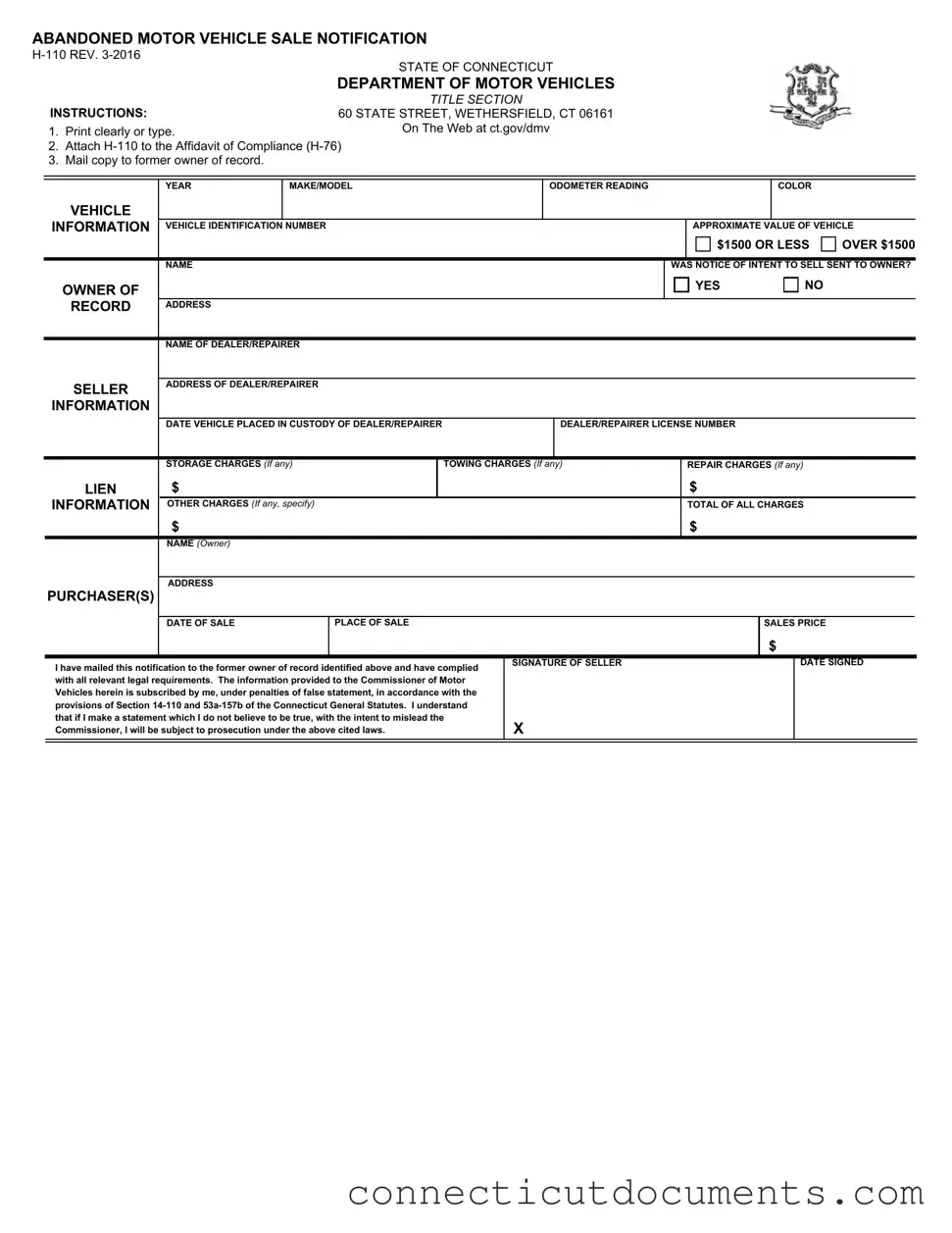The Connecticut H-76 form, also known as the Affidavit of Compliance, is closely related to the H-110 form. This document is used to confirm that the seller has followed all necessary legal steps before selling an abandoned vehicle. Like the H-110, the H-76 requires clear and accurate information about the vehicle and the seller. It serves as a declaration that the seller has complied with the law, ensuring that the sale is legitimate and that the former owner has been notified of the sale intentions.
Understanding the key aspects of a comprehensive Power of Attorney form is crucial for anyone looking to delegate legal or financial authority to another individual. This document not only serves to empower your chosen representative but also safeguards your interests when you are unable to make critical decisions on your own behalf.
The Connecticut H-130 form, which is the Application for a Certificate of Title, shares similarities with the H-110 form in that it deals with vehicle ownership transfer. While the H-110 focuses on abandoned vehicles, the H-130 is used when a vehicle is sold or transferred under normal circumstances. Both forms require specific details about the vehicle, including the Vehicle Identification Number (VIN) and information about the seller and buyer. They ensure that the ownership change is documented properly with the Department of Motor Vehicles.
The Connecticut H-121 form, or the Notice of Sale, is another document that relates to the H-110 form. This form is used to notify the state of a vehicle sale and is typically completed when a vehicle is sold through a dealership. Similar to the H-110, the H-121 contains essential information about the vehicle, including its make, model, and VIN. Both forms help maintain accurate records of vehicle ownership and sales, ensuring that all parties involved are informed of their rights and responsibilities.
Lastly, the Connecticut H-13 form, known as the Bill of Sale, is comparable to the H-110 form as it also serves as proof of a vehicle transaction. The Bill of Sale includes information about the buyer, seller, and vehicle details. While the H-110 specifically addresses abandoned vehicles and the notification process, the H-13 is used in standard sales to document the exchange of ownership. Both forms are vital for ensuring that the sale is recognized legally and that the necessary parties are informed about the transaction.
